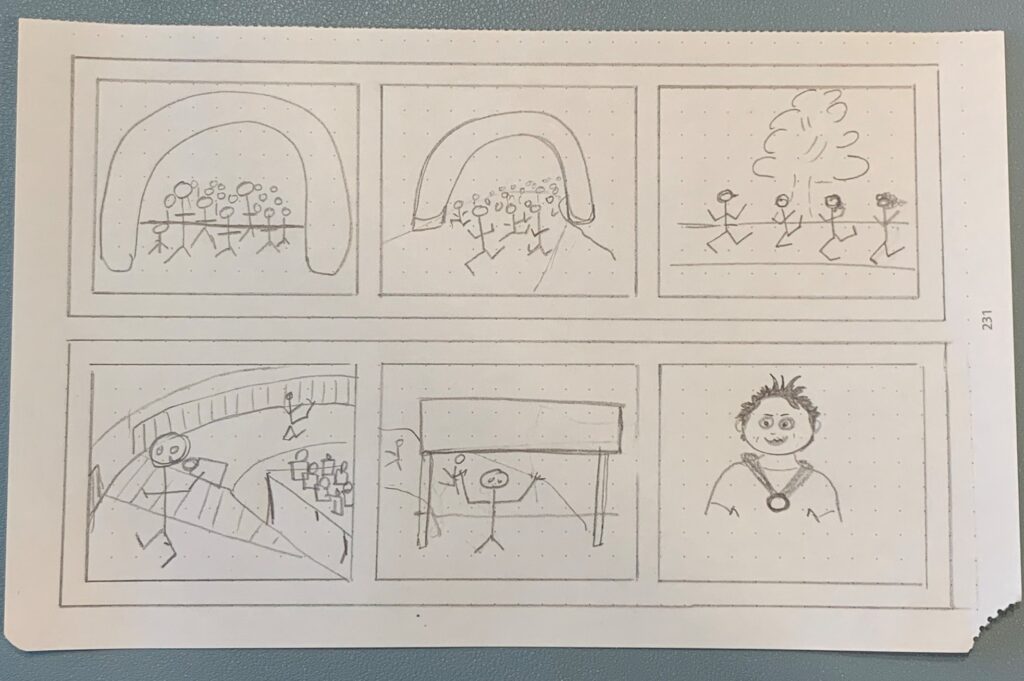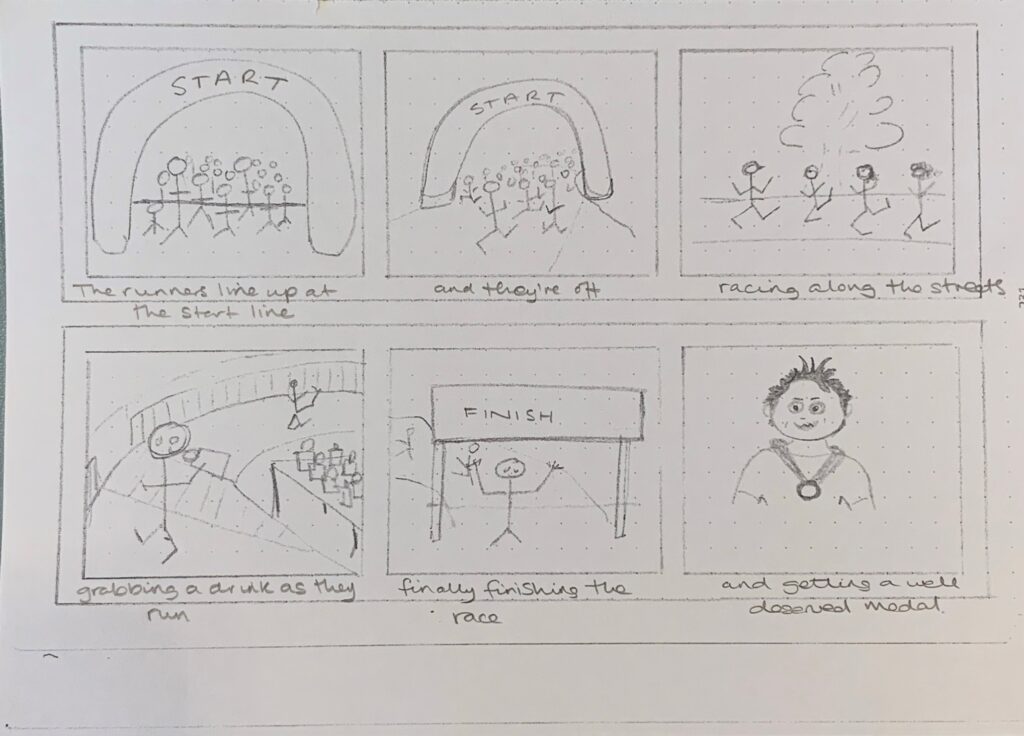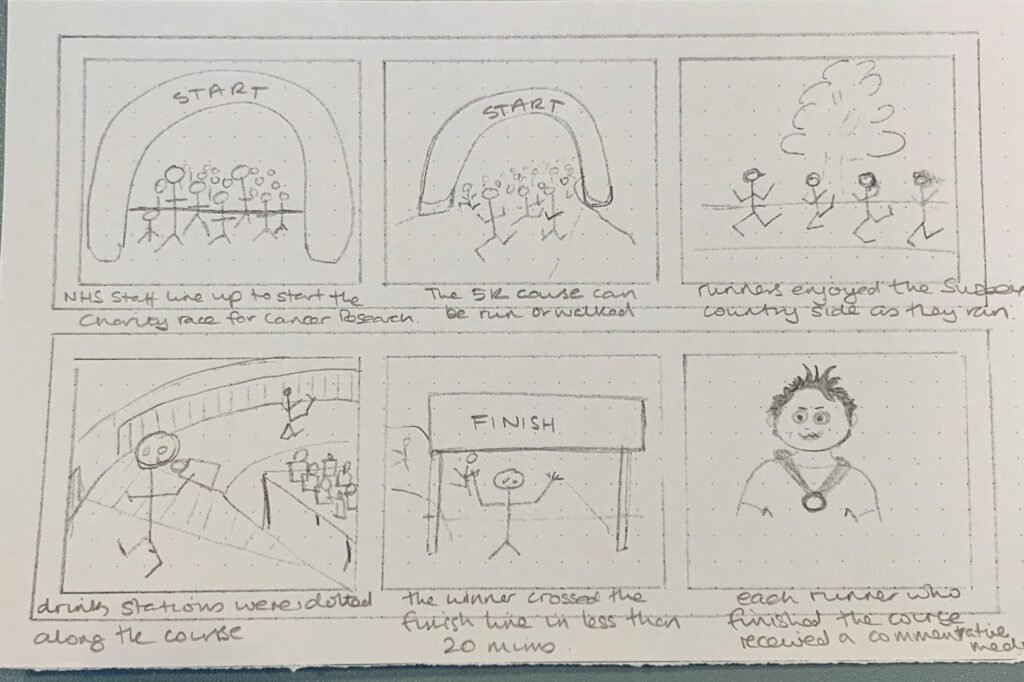Exercise 3: Storyboard
Create a storyboard where the image does not depend on the text and the text adds something new to the narrative.
This exercise is a light-hearted look at the role of image and text.
● Aim for it to be around 10 frames long.
● Draw the picture storyboard first and then add the text.
Note how the story is affected when the text is added



The storyboard I drew was a memory from a charity event I photographed a few years ago. Although basic drawings, I think the viewer would understand the symbolism and know that this is a race, with a start and a finish and that the person is wearing a medal at the end. I deliberately left out the words on the start and finish lines as well
In the second version I added fairly basic text which described the scene in the image, but didn’t really add to much other information, it stated that they are runners and they ran for one place to another and received a medal at the end.
In the third version, I added much more descriptive text adding details like why they were running, how far, where and the winning time. This is all information that couldn’t have been known from the image alone.
This supports the theory of symbols and cultural knowledge giving rise to understanding without text added to an image. However, it also demonstrates how much richer the understanding is with the added descriptive text. You can say quite a lot by combining the image and text without having to write an essay. In my own work I should remember that I don’t need to describe the scene unless there is something specific I want the viewer to see and can use descriptive language to add meaning to the things they can not see.
Learning Note:
I researched storyboard writing and found that images do not need to be that detailed for people to understand the symbols. I think the basic nature of these drawings and the level of understanding gleaned from them without any text supports that theory. I can use this in preparing for a photoshoot, by loosely sketching what I think I want. it helps to see how it might look before attempting the work.
Research
barrysenior. “Exercise 4.3 Storyboard, Walking the Dog.” O.C.A. Identity and Place: Barry Senior 511915, 9 Mar. 2017, ocaidentityandplace.wordpress.com/2017/03/09/exercise-4-3-storyboard-walking-the-dog/. Accessed 4 May 2021.
facebook.com/jimpenolaart. “Drawing Inspiration: The Keys to Creating Killer Storyboards.” Pond5 Blog, 24 Apr. 2019, blog.pond5.com/4598-drawing-inspiration-the-keys-to-creating-killer-storyboards/.
“How to Draw A-Grade Storyboards (Even If You Can’t Draw!) | Media Studies Tutorial.” Www.youtube.com, www.youtube.com/watch?v=NPrkxj2MyZI.
“Storyboard.” Finding a Place of My Own (Identity and Place), ocalearninglogblog.wordpress.com/tag/storyboard/.
wikiHow. “Make a Comic Strip.” WikiHow, wikiHow, 4 July 2006, www.wikihow.com/Make-a-Comic-Strip. Accessed 16 Oct. 2019.
